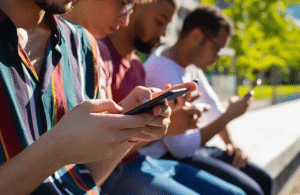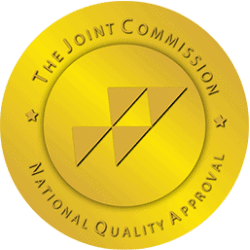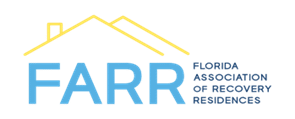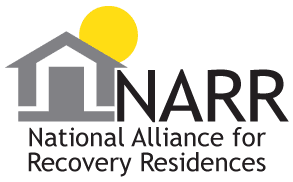How Teens Access Drugs on Social Media

The Digital Normalization of Drug Culture
One of the most significant ways social media contributes to teen drug use is through normalization. Drug use—especially marijuana, vaping, and party drugs—is often glamorized online. Influencers and celebrities may post pictures or videos showing themselves using substances casually or in luxurious settings, portraying drug use as a symbol of status, relaxation, or rebellion. Teens scrolling through these curated images are repeatedly exposed to messages that suggest “everyone is doing it,” lowering their perception of risk.
TikTok, for instance, is filled with trending videos that reference “420” culture, vaping tricks, or even comedic skits about being high. On Instagram, hashtags like #stonerlife or #weedhumor gather millions of posts. Even when content is meant as a joke, it can desensitize viewers and erode boundaries. Over time, this steady stream of exposure can shift norms—making drug use seem acceptable or even desirable.
Peer Pressure in the Digital Age
Social media intensifies traditional peer pressure. Teens don’t just hear about drug use at parties—they watch it unfold in real time. Seeing classmates or influencers post videos of themselves drinking or smoking creates a sense of fear of missing out (FOMO). The desire to fit in, to appear “cool” or “experienced,” can lead teens to experiment with substances earlier than they otherwise might.
This dynamic is especially powerful because online interactions often lack adult oversight. Unlike a physical environment where teachers, parents, or mentors might intervene, the virtual world allows drug-related content to circulate freely among peer groups, reinforcing risky behaviors.
Algorithms and Exposure
The design of social media platforms compounds the problem. Algorithms are built to maximize engagement, meaning they promote content similar to what users already view. A teen who likes or watches videos about vaping, partying, or music festivals may be served more posts related to drugs, paraphernalia, or party culture. This feedback loop can trap adolescents in an echo chamber that reinforces curiosity and acceptance of drug use.
Moreover, targeted advertising and influencer marketing can blur the line between entertainment and promotion. Even when platforms ban direct ads for illegal substances, “gray area” products like vape pens, THC edibles, or CBD products often appear in feeds, serving as gateways to more potent substances.
Teens Access to Drugs On Social Media
Beyond normalization, social media has also become a marketplace for illicit substances. Dealers use platforms like Snapchat, Instagram, and Telegram to advertise drugs with coded language, emojis, and disappearing messages. Teens can order marijuana, prescription pills, or even fentanyl-laced counterfeit drugs as easily as they might order takeout.
The anonymity and speed of these transactions make them particularly dangerous. Many young buyers don’t realize that pills labeled as Xanax or Percocet could be counterfeit and laced with lethal doses of fentanyl. According to the DEA, social media platforms have become a “critical pipeline” for the distribution of counterfeit drugs that have contributed to the alarming rise in teen overdoses.
The Mental Health Connection
Another factor linking social media to drug use is its effect on mental health. Studies show that heavy social media use is associated with higher rates of anxiety, depression, and loneliness among teens. Many young people turn to substances as a coping mechanism to deal with stress, negative self-comparisons, or cyberbullying. In this way, the very platforms that contribute to emotional distress can indirectly push teens toward drugs as a form of relief.
The Primary Substances Teens Are Seeking Through Social Media

Marijuana and THC Products
Marijuana remains the most popular drug among teens, and social media has made it easier than ever to access. Dealers frequently advertise THC vape pens, edibles, and flower through posts, stories, and direct messages. Emojis such as 🍃 (leaf) and 💨 (smoke) are used to discreetly signal availability. The normalization of marijuana on platforms like TikTok and Instagram—where influencers share “smoke sessions” or “edible reviews”—creates the impression that use is harmless or trendy, lowering perceived risk among adolescents.
Prescription Pills and Counterfeits
A disturbing trend is the rise in prescription pill sales online. Teens often seek out Xanax, Percocet, Adderall, and Oxycodone for stress relief, anxiety, or studying. However, many of these pills sold through social media are counterfeit and laced with fentanyl, posing a deadly risk. The DEA has identified platforms like Snapchat as major hubs for illicit pill distribution, warning that even one fake pill can contain a lethal dose.
Fentanyl
While few teens intentionally seek fentanyl, they are frequently exposed to it unknowingly. Fentanyl is often disguised in pills or powders purchased online. Because of its extreme potency, it is responsible for a sharp increase in teen overdose deaths in recent years. The combination of social media accessibility and counterfeit drugs has created a perfect storm of risk for adolescents.
Nicotine Vapes
Social media has also fueled the vaping epidemic among teens. Ads, product reviews, and influencer promotions make nicotine vapes appear fashionable and harmless. Teens seek flavored vape products, often marketed with bright colors and sweet flavors, which are easily ordered through online sellers or resellers found on Instagram and TikTok.
Psychedelics
Platforms like TikTok and Reddit have popularized discussions around LSD, psilocybin mushrooms, and DMT, framing them as tools for creativity or self-discovery. Teens are drawn in by content promoting “microdosing” for mental health, despite the lack of medical guidance or understanding of the risks involved.
Party Drugs: MDMA and Lean
MDMA (Ecstasy or Molly) and Lean (a mix of codeine cough syrup and soda) are often glamorized in music and videos. Social media sellers use emojis like 💊 (pill) or 🍇 (grape, for syrup) to market them. These substances are frequently adulterated with dangerous additives, increasing overdose risk.
What Can Parents Do to Intervene in Their Teen’s Social Media Drug-Seeking Activity
For parents, discovering that their teen may be seeking or purchasing drugs online is terrifying—but intervention is both possible and critical. The key is combining open communication, vigilant monitoring, education, and professional support to disrupt dangerous online behavior before it escalates.
Set Clear Digital Boundaries
Teens need freedom to grow—but not unchecked access to dangerous corners of the internet. Parents should establish clear, consistent rules for online activity, such as:
- Device-free zones (like bedrooms at night)
- Time limits on social media
- Transparency about installed apps and accounts
Tools like parental monitoring software (Bark, Qustodio, Net Nanny) can help track suspicious messages, new contacts, or risky searches. Parents should always communicate openly about why monitoring is in place: not to invade privacy, but to ensure safety.
Educate Teens About Online Drug Risks
- Many adolescents underestimate the dangers of purchasing substances online. Parents can counter this with factual education. Explain that:
- Illicit online drugs are often counterfeit, containing lethal doses of fentanyl
- No drug from a stranger online is safe, even if marketed as a “prescription”
- Law enforcement monitors these networks, and teens can face serious legal consequences
- Teens are more likely to make safe choices when they understand the real-world risks, rather than vague warnings.
Collaborate with Schools and Community Resources
Parents should not tackle this alone. Schools often have counselors or digital citizenship programs that can reinforce healthy online behavior. Community organizations and local law enforcement may also offer educational workshops on social media safety and substance prevention.
For families in crisis, seeking help from a behavioral health provider specializing in adolescent substance use can be life-changing. These professionals can assess whether deeper issues—such as anxiety, depression, or peer pressure—are driving risky online behaviors.
Foster Offline Connection and Purpose
Teens often turn to risky online communities to fill emotional voids—loneliness, stress, or a desire for belonging. Parents can help by strengthening real-world relationships and encouraging healthy outlets such as sports, art, volunteering, or part-time work. The more connected and purposeful a teen feels offline, the less likely they are to seek validation or thrills online.
Model Responsible Digital Behavior
Parents are powerful role models. Demonstrating mindful technology use—taking breaks from screens, discussing media critically, and prioritizing face-to-face connection—teaches teens how to balance their own digital habits. When parents model healthy online behavior, they reinforce the values they want their teens to adopt.
Seek Professional Support When Needed
If a parent discovers that their teen has purchased or used drugs through social media, it’s crucial to seek immediate professional support. Behavioral health programs—like Ambrosia Behavioral Health’s adolescent services—can provide therapy, digital detox guidance, and family counseling to rebuild trust and resilience. Early intervention can prevent experimentation from becoming addiction.
Intervening in a teen’s social media drug-seeking activity is not about surveillance or punishment—it’s about protection, education, and partnership. By combining awareness, open dialogue, clear boundaries, and professional help, parents can guide their teens toward safer choices in both the digital and physical worlds. The goal is not to eliminate technology, but to teach young people how to navigate it wisely—protecting their health, future, and potential.
The Best Teen Addiction Treatment Is at Ambrosia Behavioral Health in Florida

A Comprehensive Approach to Teen Recovery
Ambrosia Behavioral Health understands that teen addiction is rarely just about drugs or alcohol. It’s often rooted in deeper emotional struggles—anxiety, depression, trauma, academic pressure, or social media influences. That’s why Ambrosia’s Florida programs are built around a holistic model that treats both the behavioral symptoms and the underlying causes of substance use.
Every teen begins with a personalized assessment, allowing the clinical team to craft a treatment plan tailored to their unique needs. This may include:
- Individual therapy focused on coping skills, self-awareness, and emotional regulation
- Group therapy that fosters peer support and accountability
- Family counseling to repair communication and strengthen trust
- Educational support to help teens stay on track academically
- Recreational and experiential therapies, such as art, mindfulness, and outdoor activities
- This combination ensures each teen receives whole-person care—addressing the mind, body, and spirit.
- Expert Clinical Care in a Safe, Supportive Environment
At Ambrosia Behavioral Health, teens receive care from a multidisciplinary team of licensed therapists, medical professionals, and behavioral specialists who are experts in adolescent development. The Florida-based facilities provide a structured, nurturing environment where teens can focus on healing away from the distractions and pressures of everyday life.
Safety and trust are top priorities. Teens are guided through each stage of recovery in a setting designed to promote stability, resilience, and personal growth. Whether a teen is experimenting, struggling with dependency, or co-occurring mental health issues, Ambrosia’s programs meet them where they are—and help them move forward with confidence.
Family Involvement and Lifelong Support
Ambrosia believes recovery is a family journey. Parents and caregivers are actively involved throughout treatment—learning how to set healthy boundaries, support recovery, and rebuild connection. Family therapy sessions and educational workshops empower parents to become strong partners in their teen’s healing.
After discharge, Ambrosia’s commitment continues with aftercare planning, alumni support, and community resources to help teens maintain long-term sobriety and mental wellness.
Why Families Choose Ambrosia Behavioral Health
Families across Florida and beyond choose Ambrosia because it offers:
- Evidence-based treatment tailored to teens
- Compassionate, experienced staff who truly care
- Integrated mental health care for co-occurring disorders
- Safe, comfortable Florida locations conducive to healing
- Proven success helping teens reclaim their futures
At Ambrosia, recovery is more than stopping substance use—it’s about restoring purpose, identity, and hope.
In Conclusion
Ambrosia Behavioral Health in Florida is recognized as one of the leading providers of teen addiction treatment, offering a compassionate and comprehensive approach to recovery. The center understands that adolescent substance use often stems from deeper issues such as anxiety, depression, trauma, or peer pressure, and addresses both the root causes and the behavioral symptoms of addiction through individualized care.
Each teen receives a personalized treatment plan that may include individual and group therapy, family counseling, educational support, and experiential therapies like mindfulness and art. This holistic approach ensures healing for the mind, body, and spirit, helping teens build resilience, self-awareness, and healthy coping skills.
Ambrosia’s multidisciplinary team of Psychiatrists, licensed therapists, teachers and medical professionals provides care in a safe, structured environment designed to promote stability and trust. Families play an active role in the recovery process through therapy sessions and educational programs that teach how to support their teen’s long-term success.
Beyond treatment, Ambrosia offers aftercare planning and ongoing support to help teens maintain sobriety and emotional wellness after leaving the program. With a strong emphasis on family involvement, evidence-based therapies, and mental health integration, Ambrosia Behavioral Health empowers teens to overcome addiction and rediscover purpose.
Families across the Nation choose Ambrosia for its expert care, proven success, and dedication to helping teens reclaim their futures. For parents seeking effective, compassionate treatment, Ambrosia Behavioral Health stands as a trusted partner in lasting recovery.
Ambrosia stands at the cutting edge of adolescent mental health and addiction treatment. Since 2007 Ambrosia has been the nation’s leader in adult and adolescent behavioral healthcare maintaining a strong focus on neuroscience and research fueling their advanced treatment methods. If you or someone you know is struggling reach out today and we will provide you with exemplary customer service and a truly effective treatment experience.
Additional Teen Treatment Resources:
Home | SAMHSA – Substance Abuse and Mental Health Services Administration
United Way | Supporting Mental Health and Well-Being For All | United Way Worldwide
OMHSAS Info | Department of Human Services | Commonwealth of Pennsylvania
The System of Services and Support | Florida DCF
Social Media and Teen Drug Use FAQ
How are teens accessing drugs on social media?
Many teens use platforms like Snapchat, Instagram, and Telegram to connect with dealers who use emojis, slang, and disappearing messages to sell drugs. The anonymity and privacy features of these apps make it easier for teens to explore risky behaviors undetected.
What warning signs should parents watch for?
Look for increased secrecy online, slang or emojis linked to drugs (💊, 🍪, 🚀, 💨), sudden mood or friend group changes, or use of encrypted messaging apps. These may signal online drug-seeking activity.
How can parents intervene if they suspect social media drug use?
Start with open, nonjudgmental conversations. Express concern, not anger. Set clear digital boundaries, use monitoring tools (like Bark or Qustodio), and educate your teen about the dangers of counterfeit drugs laced with fentanyl. Seek professional help early if substance use is confirmed.
Why is early intervention important?
The earlier a teen receives help, the better the outcome. Early intervention can prevent experimentation from becoming addiction and address underlying mental health issues driving risky behavior.
What makes Ambrosia Behavioral Health the best choice for teen addiction treatment in Florida?
Ambrosia Behavioral Health provides evidence-based, holistic care that treats both substance use and co-occurring mental health conditions. Teens receive individualized treatment plans that include therapy, education, family counseling, and experiential activities—all in a safe, structured Florida facility.
What types of therapy does Ambrosia offer?
Teens benefit from a mix of psychiatry, pharmacology (when indicated), individual therapy, group therapy, family sessions, and experiential and adventure therapies like art, mindfulness, and recreation. Each program is customized to meet the teen’s emotional, psychological, and academic needs.
Does Ambrosia treat mental health issues along with addiction?
Yes. Many teens struggle with dual diagnosis—conditions like anxiety, depression, or trauma combined with substance use. Ambrosia’s integrated model ensures both are treated together for lasting recovery.
How are families involved in their teenager's addiction and mental health treatment?
Family involvement is central. Ambrosia provides family therapy sessions, education workshops, and ongoing guidance so parents can rebuild trust, set boundaries, and support recovery at home.
What happens after the teen completes treatment?
Ambrosia offers the full continuum of care including aftercare planning, multiple levels of outpatient services, and alumni support to help teens maintain sobriety, emotional wellness, and academic progress beyond residential care.
Is Ambrosia Behavioral Health located in Florida?
Yes. Ambrosia operates licensed treatment centers in Florida, offering structured, therapeutic environments ideal for adolescent recovery. However, people come to our programs from all over the country.
How can parents get started with treatment at Ambrosia?
Families can reach out directly to Ambrosia Behavioral Health for a confidential assessment. The admissions team will guide you through next steps, verify insurance, and match your teen with the most appropriate program.
What outcomes can families expect?
Teens completing Ambrosia’s programs develop strong coping skills, improved mental health, renewed academic focus, and healthier family relationships. The goal is long-term recovery, not just sobriety. Ultimately, Ambrosia creates lasting change.






